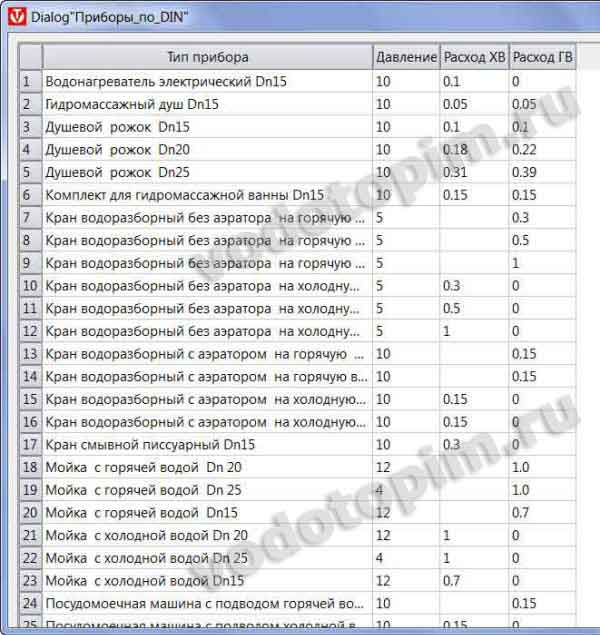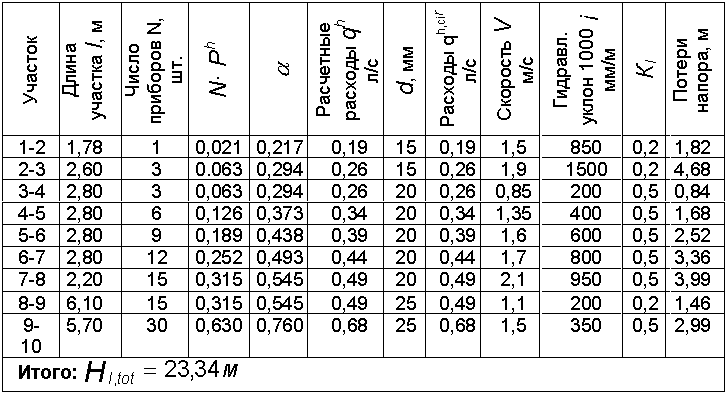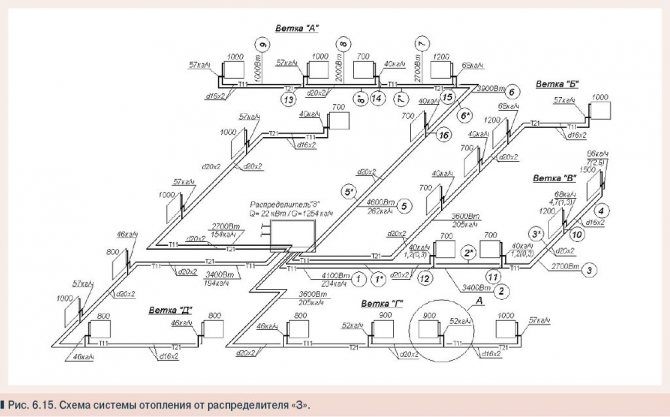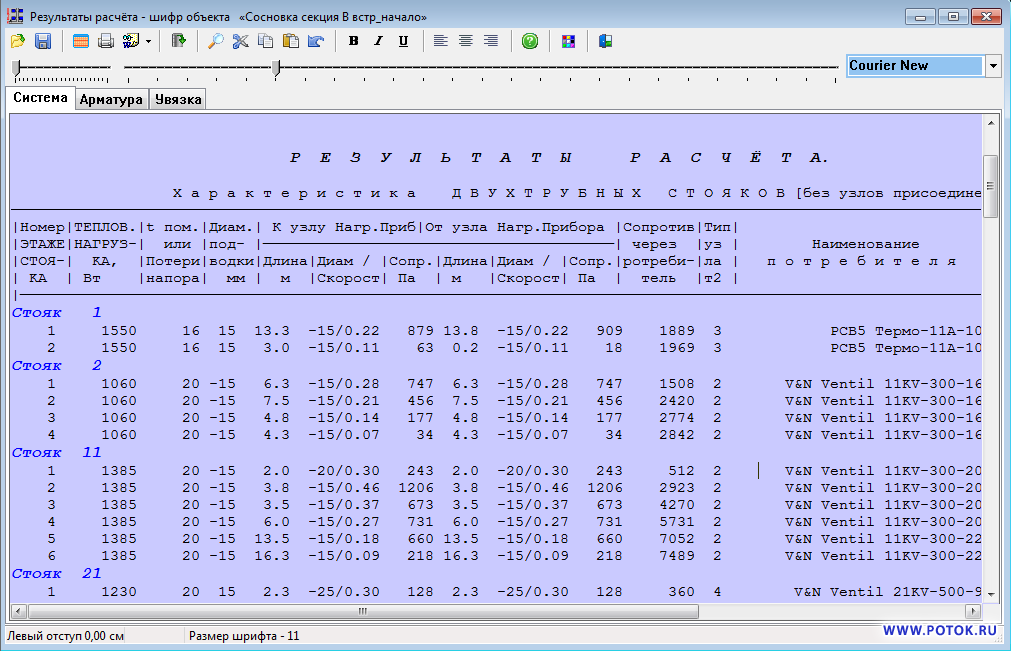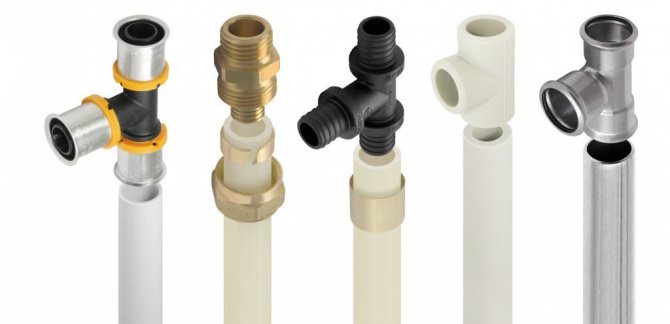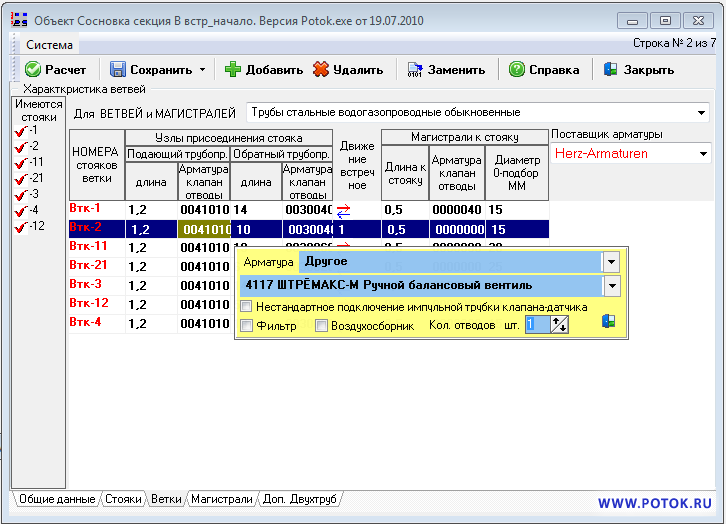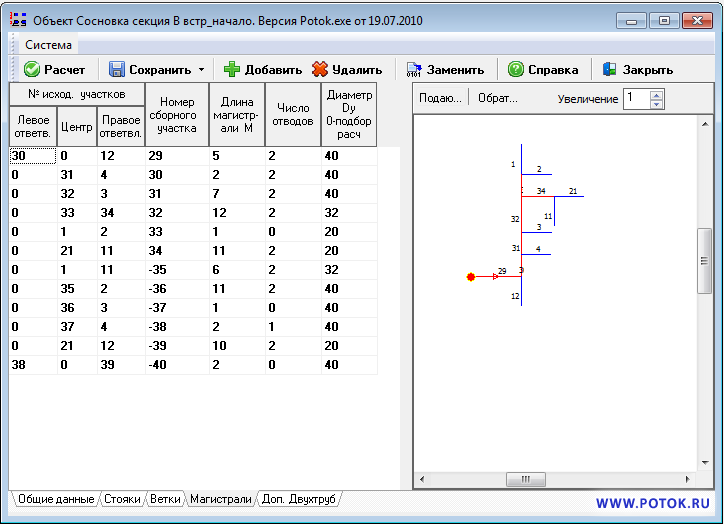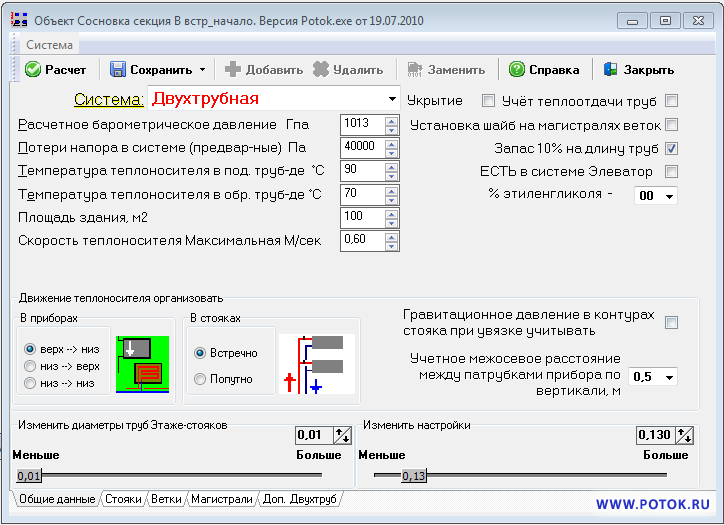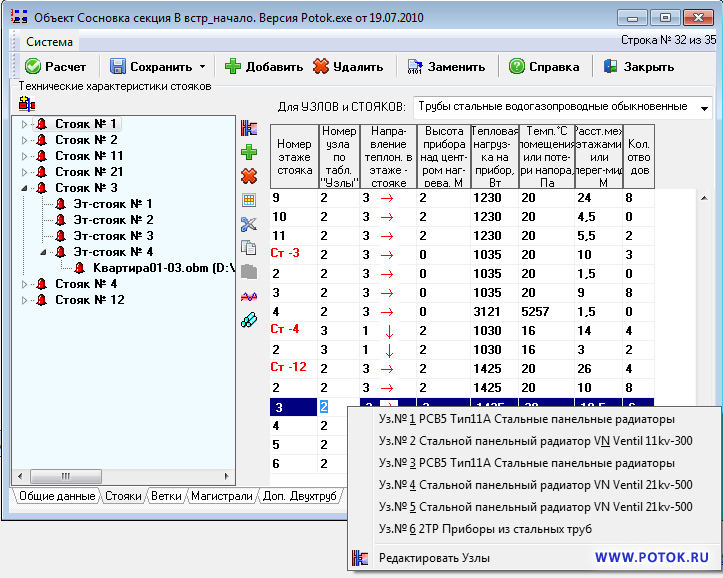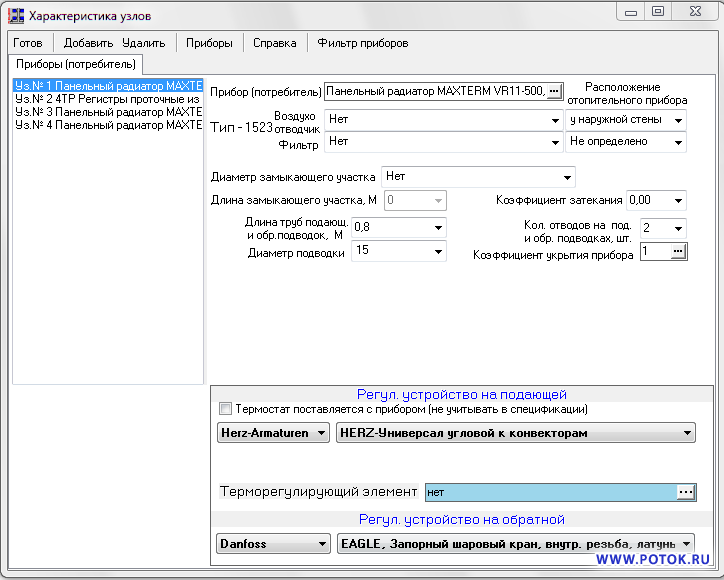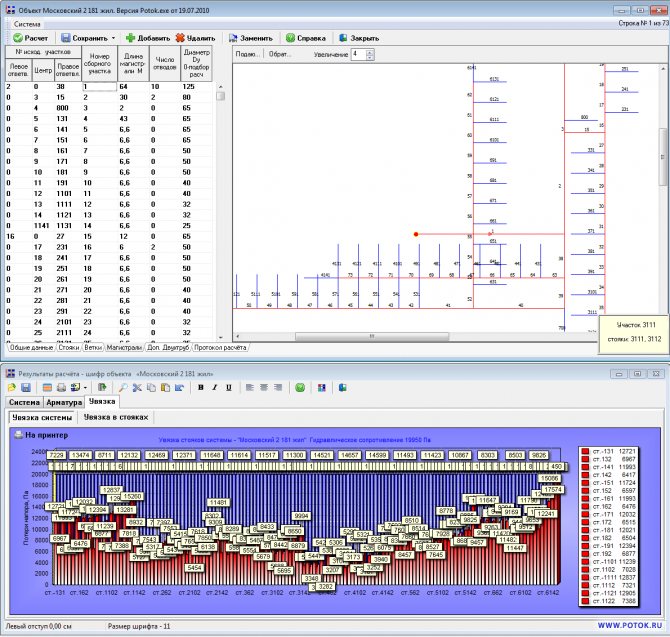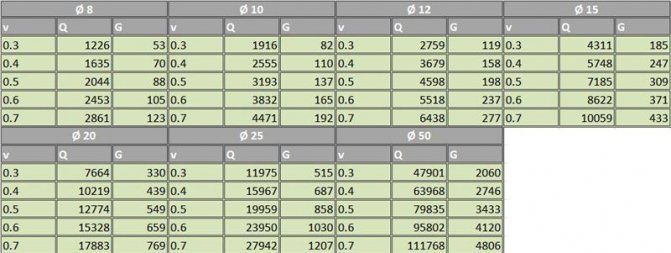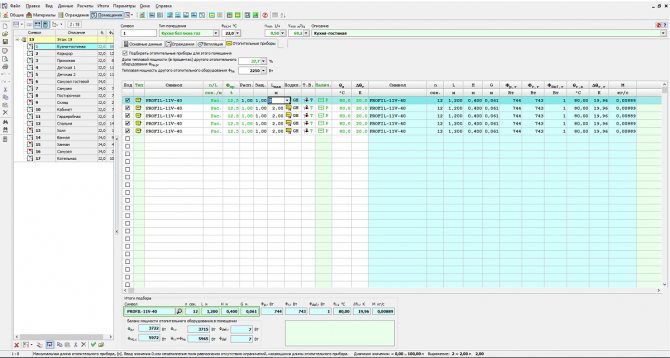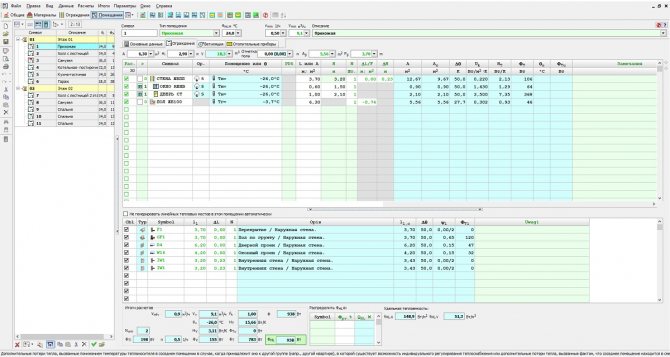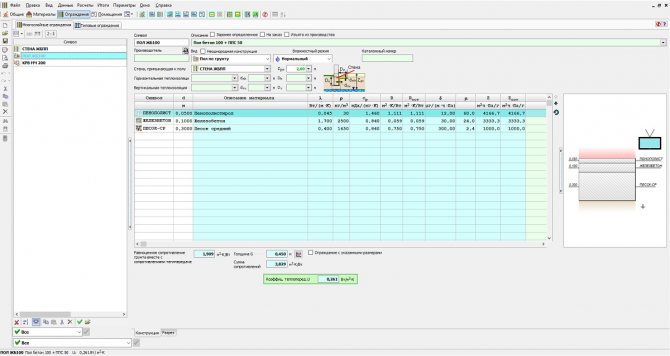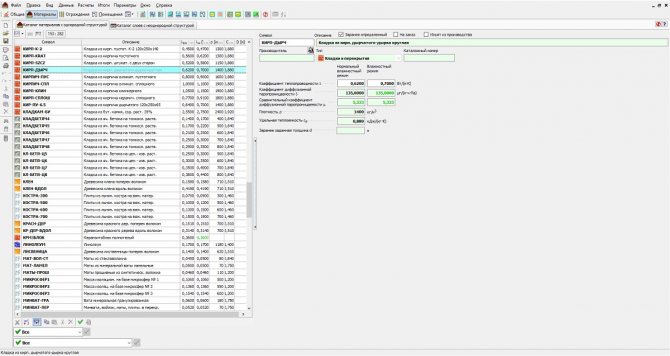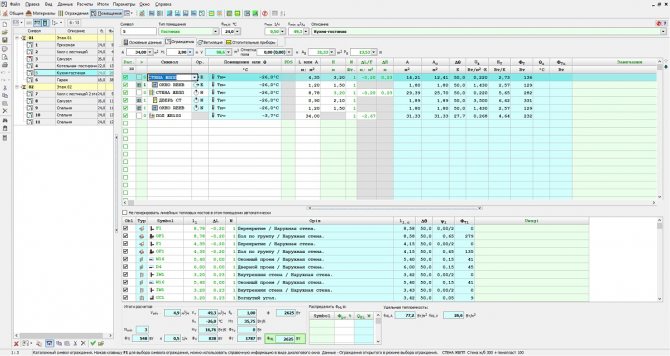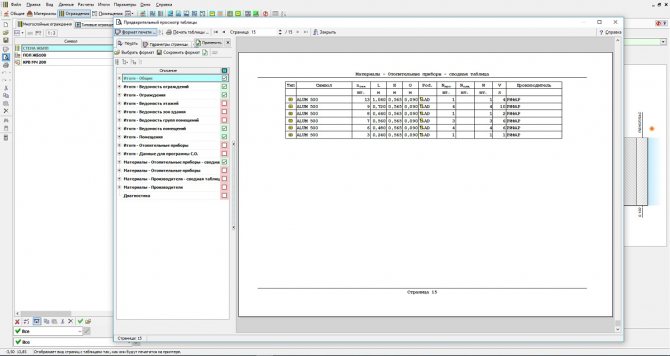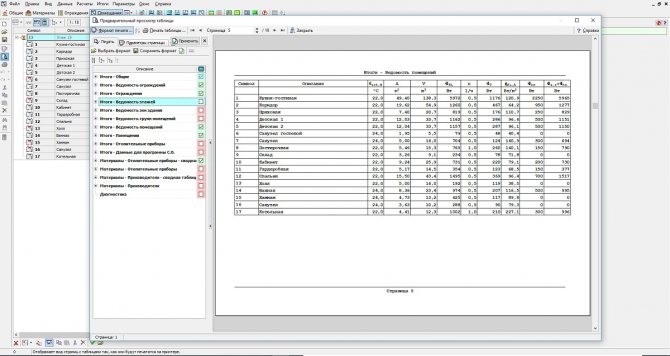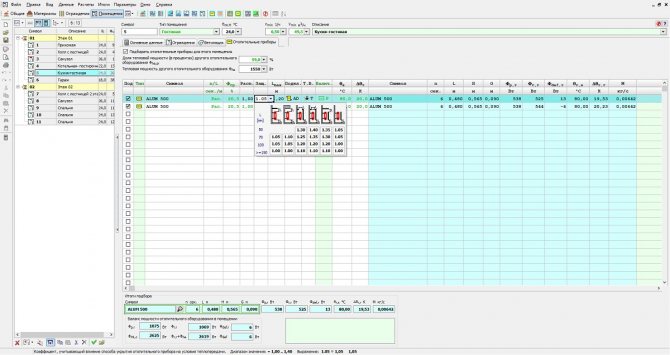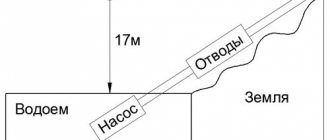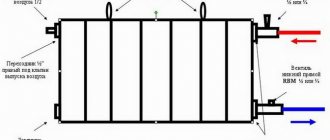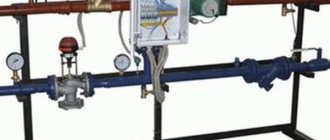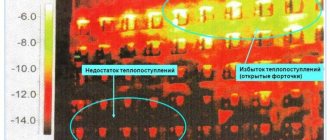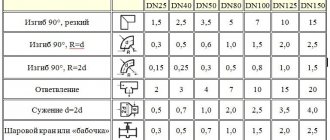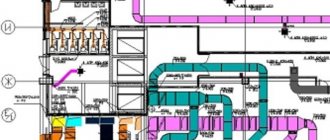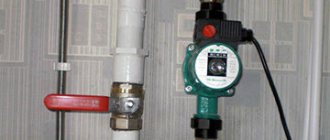How are hydraulic calculations performed
There are some tasks that need to be solved in order to make a hydraulic calculation of the heating system:
- Determine the diameter of the pipes in all sections of the system (do not forget to take into account the speed of movement of the heat carrier).
- Calculate the pressure loss.
- Decide on hydraulic balancing.
- And, of course, the flow rate of the coolant.
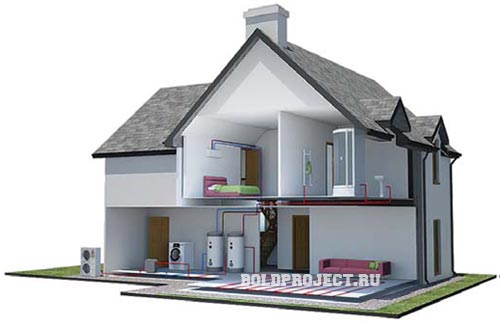
What free programs exist for this?
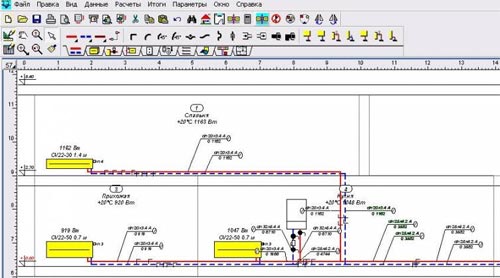

As you might have guessed, this program is designed to quickly perform the necessary calculations. First, you need to make all the appropriate settings and select the most suitable equipment items. Thus, completely new circuits can be created. Moreover, a ready-made scheme can be adjusted as needed.
This software harmoniously combines both options, allowing you to create original projects and regulate old ones. The program has the broadest possibilities regarding hydraulic calculations, from the flow rate of the coolant to the selection of pipes of the required diameter. All results of your work can be imported into the operating system in any form.
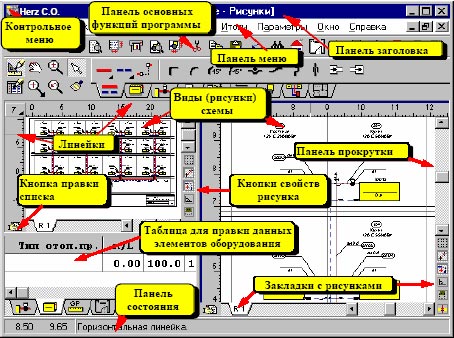

This program is freely available. It allows you to calculate everything you need for systems, regardless of the number of pipes. A significant difference of "Hertz", which favorably distinguishes it from other analogues, is that you can create various projects, both in new buildings and in reconstructed buildings, in which the glycolic mixture is the coolant. The program has been certified by LLC TsSPS.
Data entry is very convenient as it is done graphically. The calculation results are visualized in the form of diagrams.
With its help, you will calculate the surface or radiator. It consists of a special set of four similar programs. So, let's consider the capabilities of the program:
- Selection of the pipeline depending on the diameter.
- Selection of appropriate radiators.
- It determines the height at which the pumps should be placed.
- Various types of calculations for heating surfaces.
- Determination of the most suitable temperature.
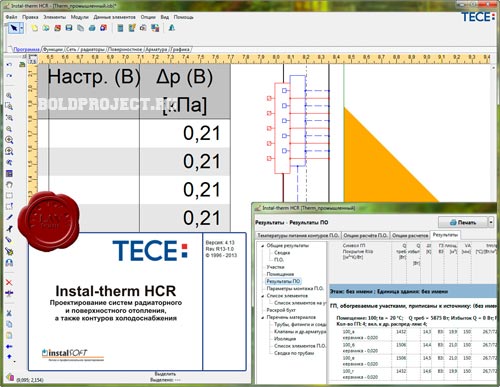

Unlike the previous options, you can download exclusively a trial version of the program for free, which, of course, has some limitations. First of all, in the vast majority of options, you can not only import the image into the operating system, but even print it. In addition, each individual application has a kind of limit: three completed projects per one. However, you can modify it an infinite number of times, this is not prohibited. And, finally, finished projects will be saved in a special format, such an extension cannot be read by any other version.
As a result, I would like to note that the hydraulic calculation of the heating system is an integral part of the modern control system. In order to choose control valves, having no idea of what is happening on the market at the moment, you will have to calculate over the entire area of the structure, it is advisable to use the richest library at the same time. The operation of the entire system will depend on how correct your data is.
Are there free software for calculations?
To simplify the calculation of the heating system of a private house, you can use special programs. Of course, there are not so many of them as graphic editors, but there is still a choice. Some are distributed free of charge, others in demo versions.In any case, it will be possible to make the necessary calculations once or twice without material investments.
Oventrop CO software
The free software "Oventrop CO" is designed to carry out the hydraulic calculation of the heating of a country house.
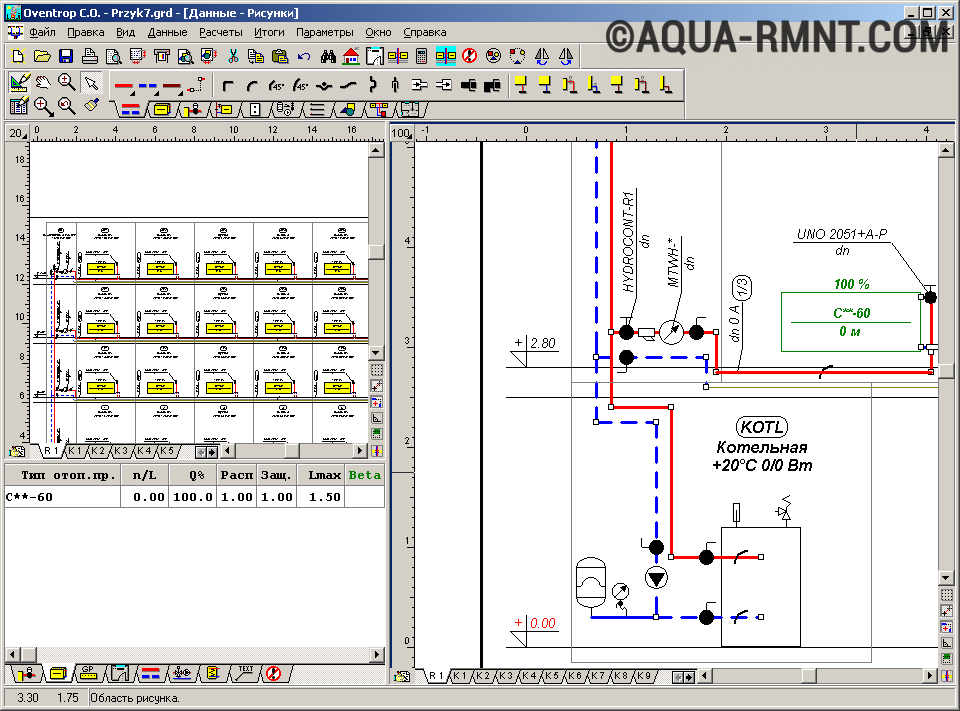

The Oventrop CO software is designed to provide graphical assistance during the heating design phase. It allows you to perform hydraulic calculations for both one-pipe and two-pipe systems. It is simple and convenient to work in it: there are ready-made blocks, control over errors, a huge catalog of materials
New systems can be designed on the basis of the preliminary settings and the selection of heating devices, piping and fittings. In addition, it is possible to adjust the existing circuit. It is carried out by selecting the power of the equipment already available in accordance with the needs of the heated rooms and premises.
Both of these options can be combined in this program, allowing you to adjust existing fragments and design new ones. For any variant of the calculation, Oventrop CO selects the settings for the reinforcement. In terms of performing hydraulic calculations, this program has ample opportunities: from the selection of pipeline diameters to the analysis of water consumption in equipment. All results (tables, diagrams, figures) can be printed or transferred to the Windows environment.
Instal-Therm HCR software
The Instal-Therm HCR software calculates the radiator and radiant heating system.
It is supplied in the InstalSystem TECE kit, which includes three more programs: Instal-San T (for designing cold and hot water supply), Instal-Heat & Energy (for calculating heat losses) and Instal-Scan (for scanning drawings).
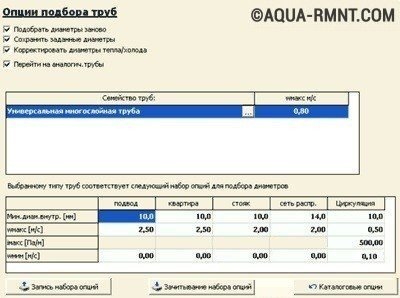

The Instal-Therm HCR program is supplied with extensive catalogs of materials (pipes, water consumers, fittings, radiators, thermal insulation and valves and fittings). The calculation results are issued in the form of a specification for the materials and products offered by the program. The only drawback of the trial version is that it cannot be printed.
Computing capabilities of "Instal-Therm HCR": - selection by diameter of pipes and fittings, as well as tees, fittings, distributors, bushings and thermal insulation of the pipeline; - determination of the lifting height of the pumps located in the mixers of the system or on the site; - hydraulic and thermal calculations of heating surfaces, automatic determination of the optimal inlet (power) temperature; - selection of radiators, taking into account the cooling in the pipelines of the working agent.
The trial version is free to use, but it has a number of limitations. First, as with most shareware programs, the results cannot be printed or exported. Second, only three projects can be created in each of the package applications. True, you can change them as much as you like. Thirdly, the created project is saved in a modified format. Files with this extension will not be read by any other trial version or even the standard version.
Calculations and work to be done in advance
Hydraulic calculation is the most time consuming and complex design stage.
- First, the balance of heated rooms and premises is determined.
- Secondly, it is necessary to select the type of heat exchangers or heating devices, as well as to place them on the plan of the house.
- Thirdly, the calculation of heating a private house assumes that a choice has already been made regarding the configuration of the system, the types of pipelines and fittings (regulating and shut-off).
- Fourthly, a drawing of the heating system must be made. It is best if it is an axonometric diagram. It should indicate the numbers, the length of the calculated sections and the heat loads.
- Fifth, the main circulation ring is installed. This is a closed loop that includes successive pipe sections directed to the device riser (when considering a one-pipe system) or to the most distant heating device (if there is a two-pipe system) and back to the heat source.
Calculation procedure
Hydraulic calculation of the heating system involves the solution of the following tasks:
- determination of the diameters of the pipeline at various sections (this takes into account the economically feasible and recommended speeds of the coolant movement);
- calculation of hydraulic pressure losses at various sites;
- hydraulic balancing of all branches of the system (hydraulic instrumentation and others). It involves the use of control valves that allow dynamic balancing under non-stationary hydraulic and thermal modes of operation of the heating system;
- coolant flow rate and calculation of pressure losses.
Calculation program HERZ HERZ official website of HERZ Armaturen in our country
We also inform you that the HERZ fittings database has been updated in the RAUCAD program. For questions about obtaining a new base, please contact the engineer of the technical support group of the department of internal engineering systems, Moscow, tel. (ext. 203).
HERZ C.O.
HERZ C.O. it is necessary for the hydraulic calculation of single and heating systems with two pipes and cooling, during the design of new systems, and also for the regulation of existing ones in reconstructed buildings (for example, after the building has been insulated), it has the ability to calculate systems where glycolic mixtures are the heat carrier.
The program makes it possible to perform completely all hydraulic calculations of equipment, within the framework of which:
the diameters of the pipelines are selected; analysis of water consumption in the designed equipment; the pressure loss in the equipment is determined; the hydraulic resistance of the circulation rings is determined, taking into account the gravitational pressure associated with the cooling of water in pipelines and heat consumers; the settings of the pressure difference regulators installed in the places selected by the designer are selected (the base of the risers, branches, etc.); the required authority of the thermostatic valves is taken into account; the excess pressure in the circulation rings is reduced by selecting the presettings of the valves; taking into account the need to equip the appropriate resistance in terms of hydraulics of the section with the heat consumer.
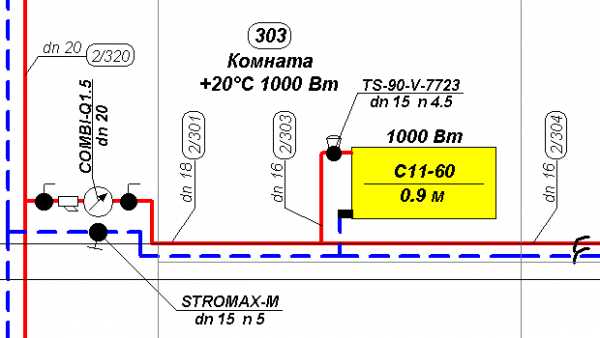

The program uses many solutions to facilitate and improve the work. The most important of them are:
- graphical data entry process;
- presentation of the results of calculations on the diagram and floor plans;
- developed context-sensitive help system, which calls up information about both individual program commands and hints regarding the input data;
- multi-window environment, it allows you to simultaneously view many types of data, totals, etc .;
- the usual cooperation with the printer and plotter, the function of previewing pages before printing and output to the plotter;
- luxurious error diagnostics and the function of their automated search, both in the table and in the diagram;
- quick access to catalog data of pipes, radiators and fittings.
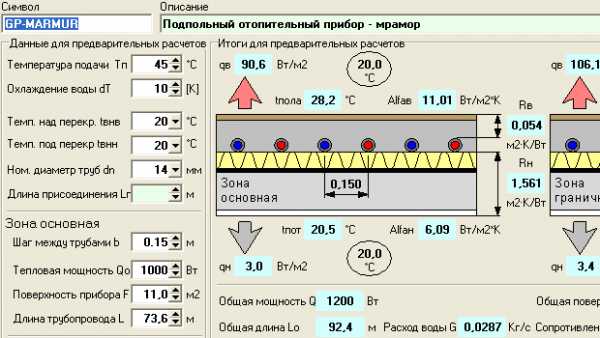

HERZ OZC Program
The HERZ OZC program is used to determine the calculated heat loss of individual rooms in a building, and also of the entire structure. The calculation is carried out in accordance with the appropriate standards. The program executes:
- calculation of heat transfer coefficients for walls, floors, roofs and ceilings between the upper floor and the attic;
- calculation of heat loss for individual premises;
- calculation of heat loss of the entire structure.
The program uses many solutions to facilitate and improve the work. The most important of them are:
- developed help system;
- luxurious catalog of materials for construction;
- function of automated determination of heat transfer resistances, resistances of air layers of ceilings between the upper floor and the attic, soil resistance;
- the function of automatically creating the next floors, copying rooms, and also selecting rooms, for example, if you need to call another room when entering data about a room;
- the option of automated distribution of heat losses from a room with a small demand for heat output (for example, a corridor) to adjacent rooms, which makes it possible to directly transfer the calculation results to the HERZ C.O.
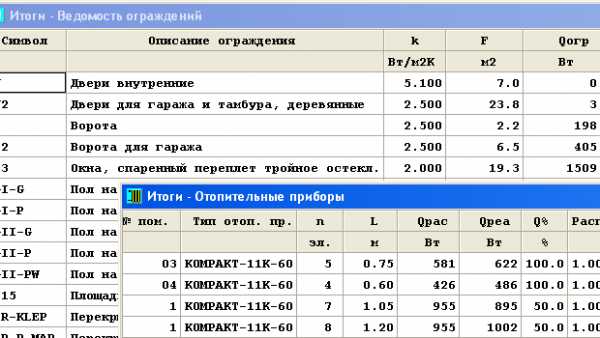

The program provides an opportunity for calculating the heat loss of huge buildings.
The following are data restrictions:
Maximum number of defined fences: 16300 Maximum number of layers in one fence: 16300 Maximum number of rooms: 16300 Maximum number of fences in one room: 16300
The results of heat loss calculations are the output data for the HERZ C.O program used for the design of district heating systems.
What is the essence of such a calculation?
The main difference between modern systems is a special mechanism that provides a hydraulic mode. Modern developments and high-quality materials that are used today in heating systems make it possible to respond in a timely manner to the slightest temperature fluctuation. It would seem that this is very beneficial: energy is saved, and therefore, our heating costs are minimized. But on the other hand, such equipment requires special knowledge regarding the use of high-tech control valves, as well as other elements in the arrangement of the system.
Important information! The combination of hydraulic calculation and control valves is the key to the efficiency and operability of modern heating systems.
There are certain circumstances that require us to comply with the above conditions.
- The coolant must be supplied to the heating devices in the proper amount - this way you will achieve a heat balance, provided that you set the temperature in the building, and the outside temperature will change.
- Lack of noise, durability and stability of the heating system.
- Minimum operating costs, in particular, electricity, which would be directed to overcome the hydraulic resistance of the pipeline.
- The cost of installing the system should be kept to a minimum, which depends to a large extent on the diameter of the pipeline.
Video instruction
Regarding the preliminary work.
Due to the fact that the hydraulic calculation requires a lot of time and effort, we need to first perform some calculations:
- Determine the balance of rooms and rooms that are heated.
- Decide on the type of heating equipment and heat exchanger. Arrange them according to the general plan of the building.
- Before proceeding with the calculation, you should select the pipelines and decide on the configuration of the heating system as a whole.
- It is necessary to make a drawing of the system, preferably an axonometric diagram. In it, indicate the length of the sections, the numbers and the magnitude of the load.
- The circulation ring must also be installed in advance.
Important! If the calculation concerns a wooden house, then there are no differences between it and a brick, concrete, etc.
will not be.
... and throughout the entire service life of the system
We want the hydraulic system to perform as expected for its entire life. With TA SCOPE and TA Select, you can easily check if the system is working properly.
In TA SCOPE, the flow, differential pressure, 2 temperatures, differential temperature and power are entered. To analyze these measured data, they are loaded into TA Select.
Enter E-mail to receive information about new programs
After collecting the initial data, determining the heat losses of the house and the power of the radiators, it remains to perform the hydraulic calculation of the heating system. Correctly executed, it is a guarantee of correct, silent, stable and reliable operation of the heating system. Moreover, it is a way to avoid unnecessary investment and energy costs.
Hydraulic calculation methods
As we have already said, the hydraulic calculation can be done on an online calculator, using a special program, or in an Excel spreadsheet. The first option is suitable even for those who do not understand anything about heating technology and hydraulics. Naturally, this method can only obtain approximate values, which cannot be used in large and complex projects.
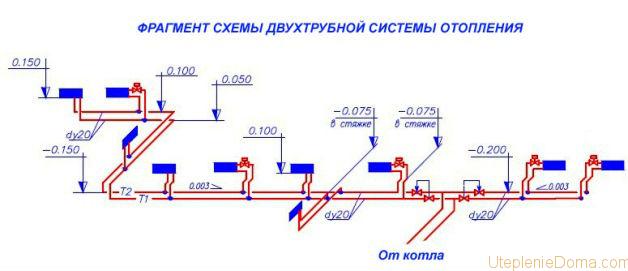

An example of an axonometric diagram.
The software is very expensive and it makes no sense to buy it at once, but you can make a table in Excel without investment. You can perform the calculation using different formulas:
- theoretical hydraulics;
- SNIPa 2.04.02-84.
But the calculation method may also differ: specific pressure loss or resistance characteristics. The latter cannot be used for gravitational systems with natural circulation of the coolant. When installing small two-pipe heating circuits with forced circulation, it is enough to adhere to a few simple rules. The main lines are made of polypropylene pipes with an outer diameter of 25 mm. Radiator outlets are made of 20 mm pipes. And we wrote about how to choose a pump.
Tools in the Valtec Main Menu
Valtec, like any other program, has a main menu at the top.
We click on the "File" button and in the submenu that opens, we see the standard tools known to any computer user from other programs:
The program "Calculator" built into Windows is launched to perform calculations:
With the help of the "Converter" we will convert one measurement unit to another:
There are three columns here:
In the extreme left, we select the physical quantity with which we work, for example, pressure. In the middle column - the unit from which you need to translate (for example, Pascals - Pa), and in the right - into which you need to translate (for example, in technical atmospheres). In the upper left corner of the calculator there are two lines, in the upper one we will drive the value obtained during the calculations, and in the lower one the translation into the required units of measurement will be immediately displayed ... But we will talk about all this in due time, when it comes to practice.
In the meantime, we continue to get acquainted with the "Tools" menu. "Form generator":
This is necessary for designers who carry out projects to order. If we make heating only in our own house, then the "Form Generator" is unnecessary for us.
The next button in the main menu of Valtec is Styles:
To control the appearance of the program window, it adjusts to the software that is installed on your computer. For me, such an unnecessary gadget, because I am one of those for whom the main thing is not "checkers", but to get there. And you decide for yourself.
Let's take a closer look at the tools under this button.
In "Climatology" we select the construction area:
Heat loss in a house depends not only on the materials of the walls and other structures, but also on the climate of the area where the building is located. Consequently, the requirements for the heating system depend on the climate.
In the left column we find the area in which we live (republic, region, region, city). If our settlement is not here, then we choose the closest one.
"Materials". Here are the parameters of different building materials used in the construction of houses. That is why, when collecting initial data (see previous design materials), we listed the materials for walls, floors, ceilings:
Openings tool. Here is information on door and window openings:
"Pipes".Here you can find information about the parameters of pipes used in heating systems: internal and external dimensions, resistance coefficients, roughness of internal surfaces:
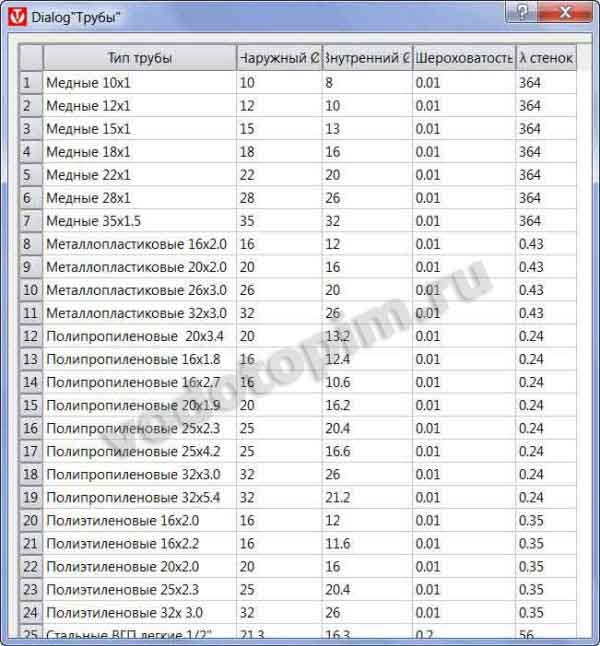

We will need this for hydraulic calculations - to determine the power of the circulation pump.
"Heat carriers". Actually, there is nothing here except the characteristics of those coolants that can be poured into the heating system of the house:
These characteristics are heat capacity, density, viscosity.
Water is not always used as a heat carrier; it happens that antifreezes are poured into the system, which are called "non-freezing" in the common people. We will talk about the choice of a coolant in a separate article.
"Consumers" are not needed to calculate the heating system, since this tool for calculating water supply systems:
"KMS" (coefficients of local resistance):
Any heating device (radiator, valve, thermostat, etc.) creates resistance for the movement of the coolant, and these resistances must be taken into account in order to correctly select the power of the circulation pump.
"Devices according to DIN". This, like "Consumers", is more about water supply systems:
